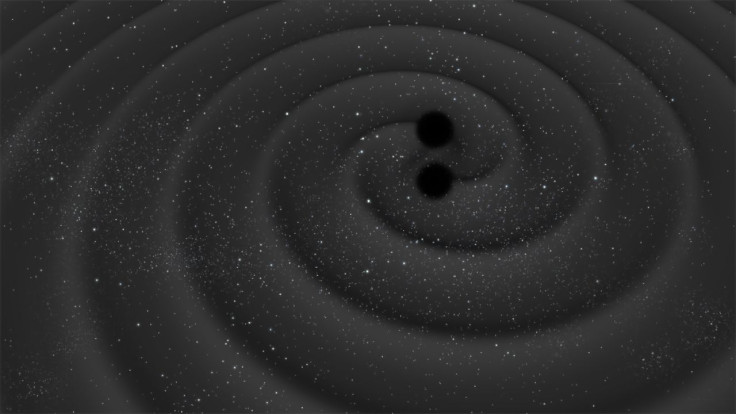Did Black Holes Exist Before Stars? Gravitational Waves Could Provide Answer

Among the many mysterious objects in the universe that we don’t understand, black holes are pretty high up on that list. Till recently, black holes were thought to form when stars over a certain mass collapsed under their own gravity, but then we found that merging neutron stars can form a black hole too.
Neither of those scenarios, however, explains how black holes could exist at a time before the first stars formed in the universe. These primordial black holes, as they are called, were first theorized about 40 years ago by Stephen Hawking and other physicists collaborating with him. They have never been detected so far, but a paper published Thursday explains a theory based on gravitational waves that could help confirm, or categorically deny, their existence.
Gravitational waves are ripples in the fabric of space-time, caused by the intense gravity that results from the collision between two very dense and massive objects, like black holes or neutron stars. In the last two years, scientists at Laser Interferometer Gravitational-Wave Observatory (LIGO) and Virgo have detected six confirmed instances of gravitational waves.
In a statement Thursday, Savvas Koushiappas, an associate professor of physics at Brown University and coauthor of the study with Abraham Loeb from Harvard University, explained their theory: “The idea is very simple. With future gravitational wave experiments, we’ll be able to look back to a time before the formation of the first stars. So if we see black hole merger events before stars existed, then we’ll know that those black holes are not of stellar origin.”
The determination of age of these black holes is based on how far they are, which in turn is estimated using redshift — the lengthening of the wavelength of light, caused by Doppler effect, in an expanding universe. The higher the redshift, the more distant the object. Koushiappas and Loeb calculated the maximum redshift possible for gravitational waves to be detected, at least if we assume physics according to the Standard Model. And that came out to be a redshift of 40.
“That’s really the drop-dead point. In reality, we expect merger events to stop well before that point, but a redshift of 40 or so is the absolute hardest bound or cutoff point,” Koushiappas said.
Any detection of black hole mergers beyond that point, which amounts to about 65 million years after the Big Bang, would either prove that primordial black holes exist or that the standard cosmological model of how the early universe evolved is not right.
Primordial black holes are categorized in a class of entities called Massive Compact Halo Objects (MACHOs) and it has been theorized that dark matter — the enigmatic theoretical stuff that accounts for most of the mass in the universe — could be made of MACHOs in the form of these ancient black holes. If they are found, this theory would find more support.
If, on the other hand, mergers beyond the redshift of 40 were found to not be primordial, it would mean that matter distribution in the universe is not based on Gaussian probability. The standard cosmological model explains density fluctuations in matter in the early universe based on Gaussian distribution.
“Evidence for non-Gaussianity would require new physics to explain the origin of these fluctuations, which would be a big deal,” Loeb said in the statement.
The paper, titled “Maximum Redshift of Gravitational Wave Merger Events,” appeared online in the journal Physical Review Letters.
© Copyright IBTimes 2025. All rights reserved.





















